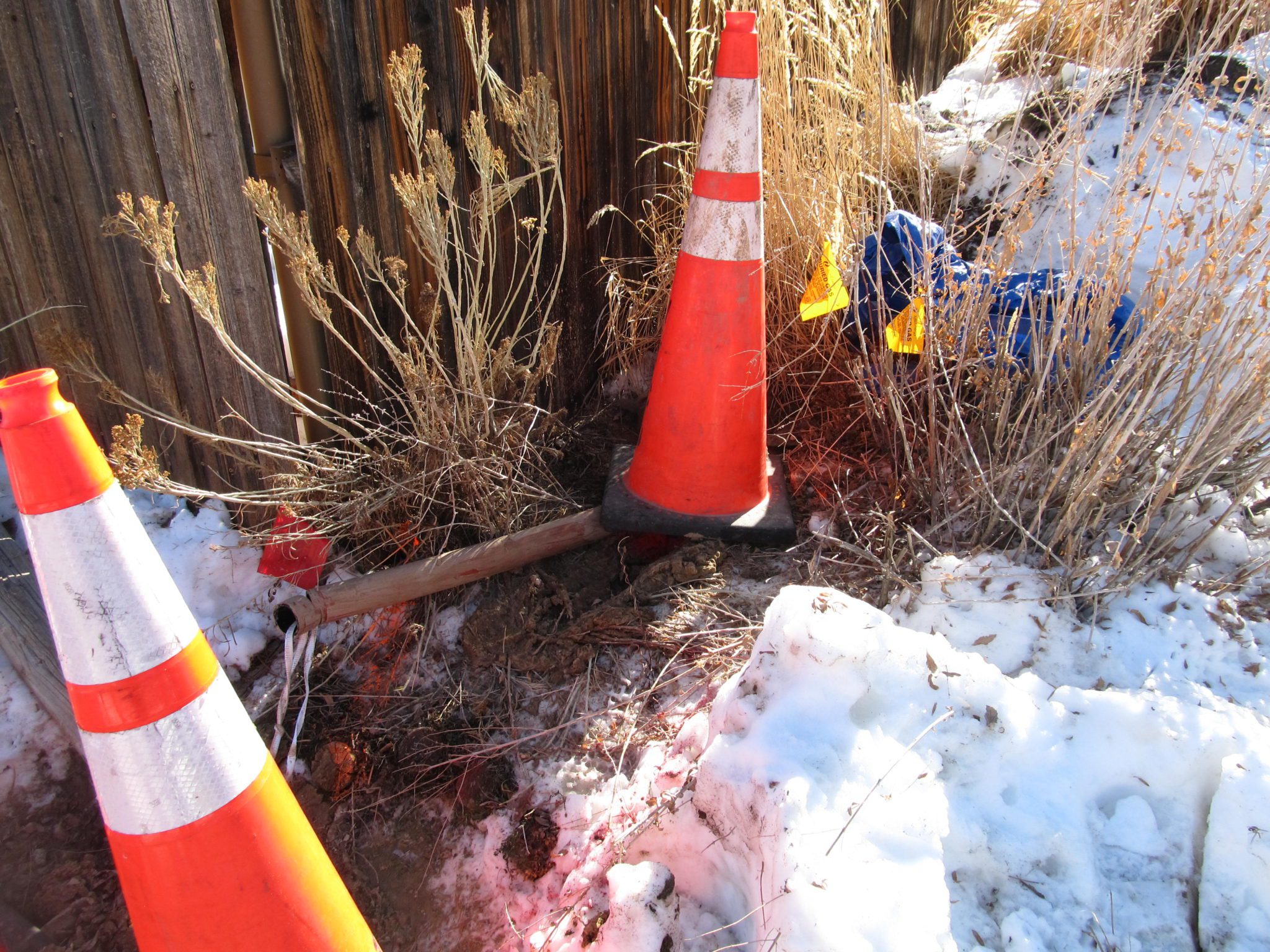
Gardening can be such a enriching and rewarding activity. It provides the gardener an opportunity to work the soil in the ways of his or her forbearers. It can be an awesome form of physical activity; try digging a tree stump out for a few hours; you’ll get both aerobic exercise and a strength training workout in, along with copious amounts of sweat, cursing and bloody blisters.
Gardening also provides the practitioner a chance for quiet contemplation and peaceful introspection.
But gardening also has a darker side; for it can be humbling and heartbreaking activity chock full of failure and frustrations. Experienced gardeners become acutly aware of just how small and helpless they are in the face of nature and the elements.
Late season snowstorms can rip large branches off of trees, or even snap them in half. High winds can blow mature trees down. Droughts may leave nothing in the garden but dessicated sticks and twigs. Torrential rains can cause flooding and mass destruction. Insects and diseases can turn the landscape into a post-apocalyptic wasteland.
A gardener really only has two courses of action in the face of these calamities: accept that this is a part of gardening and move on, or rail at the clouds about the injustice of it all and then accept it and move on. I myself lean more toward the latter.
And then there are unexpected man-made disasters. Such as when the power company whacks back tree branches that are getting close too the power lines, but leave behind a tree that looks like something out of a Salvador Dali painting. Or a neighbor who indiscriminately sprays week-killer chemicals on a windy day and some of that spray lands on a prized plant in your yard.
Or when the cable company, of which you are not even a subscriber, comes in and tears up a portion of your landscape and causing untold damage. Such a thing happened to me recently.
Last week Comcast invaded my little slice of Eden in order to install an “emergency” conduit. Most residents who live in housing developments are usually aware that the six feet of your property, going from the sidewalk into the yard, is an easement. The city or utitilties can access this section for various reasons, including widening the street! I suspect a lot of homeowners aren’t aware that this six foot easement extends around your entire property line. You never read that little tidbit of information when gardening magazines or online articles talk about installing a garden bed on your landscape perimeter.
I found out about this fact the hard way about ten years ago when one-third of my driveway border was dug up to access powerlines. I lost several plants that year, and it took a long time for the new plants that replaced them to mature and fill in the blank spots.
So, when paint markings and utility flags mysteriously appeared in my yard, I immediately knew something was in the works. The markings started in the street, worked their way up the border next to the driveway and into the backyard.
Thus I was not terribly surprised when a slew of trucks, towing various trailers of large equipment, showed up on my driveway and disgorged work crews to stomp on my garden beds.
I wandered out to talk to the foreman for an update. He was a very nice man, about my age, who was very apologetic about the havoc he was about to wreck upon my landscape. He explained why they had to go through my yard to install the conduit. I thanked him for his time and went on about my business. These are the vagaries of gardening life.
As you can see by the pictures below, Comcast at least attempted to limit the amount of damage unlike the power company ten years ago. I’m truthfully not too upset by all this, because as I stated at the beginning, gardening has a way of making a gardener humble. And I knew there were risks that things like this might happen when I put my borders in on the property.
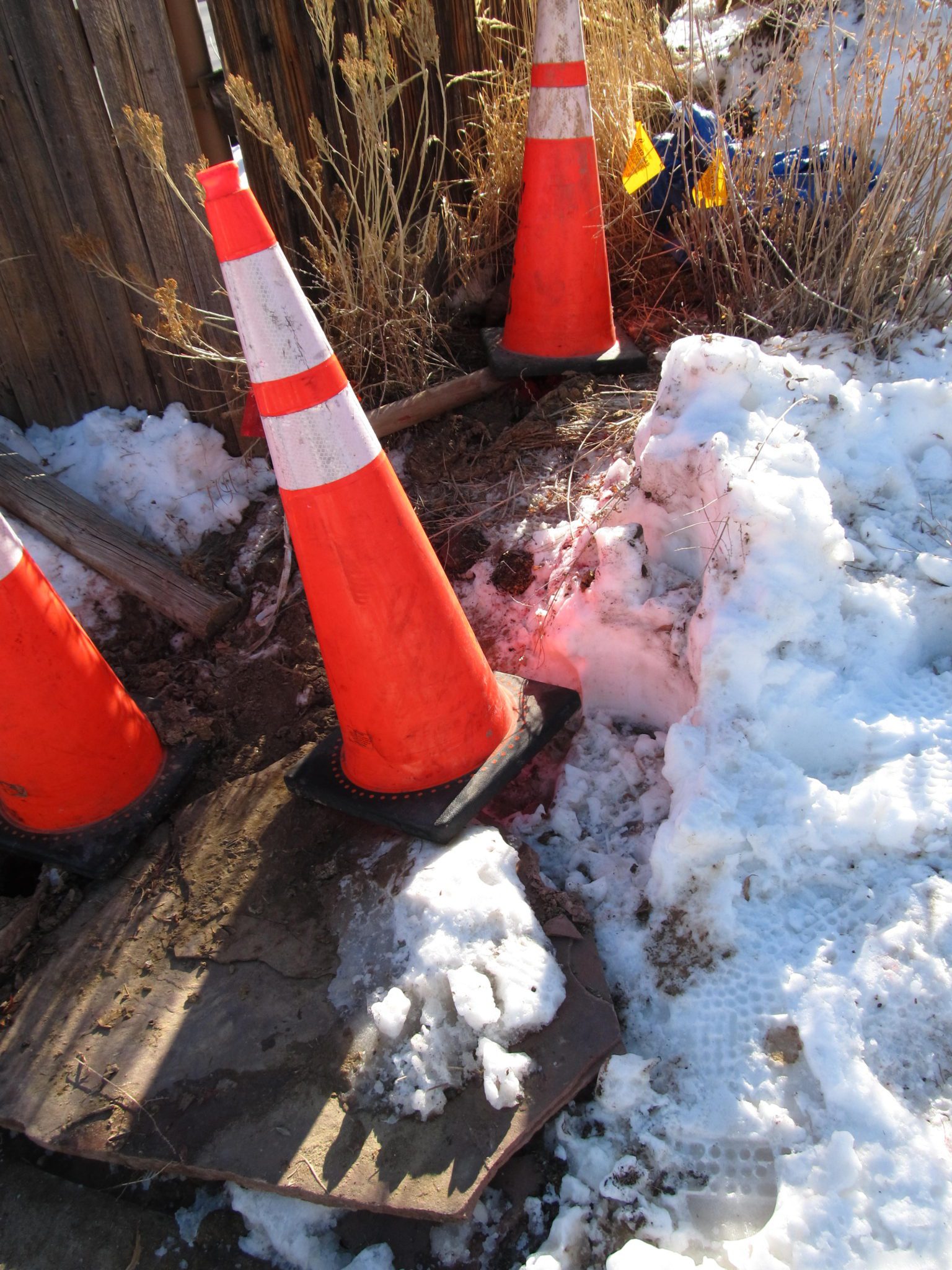
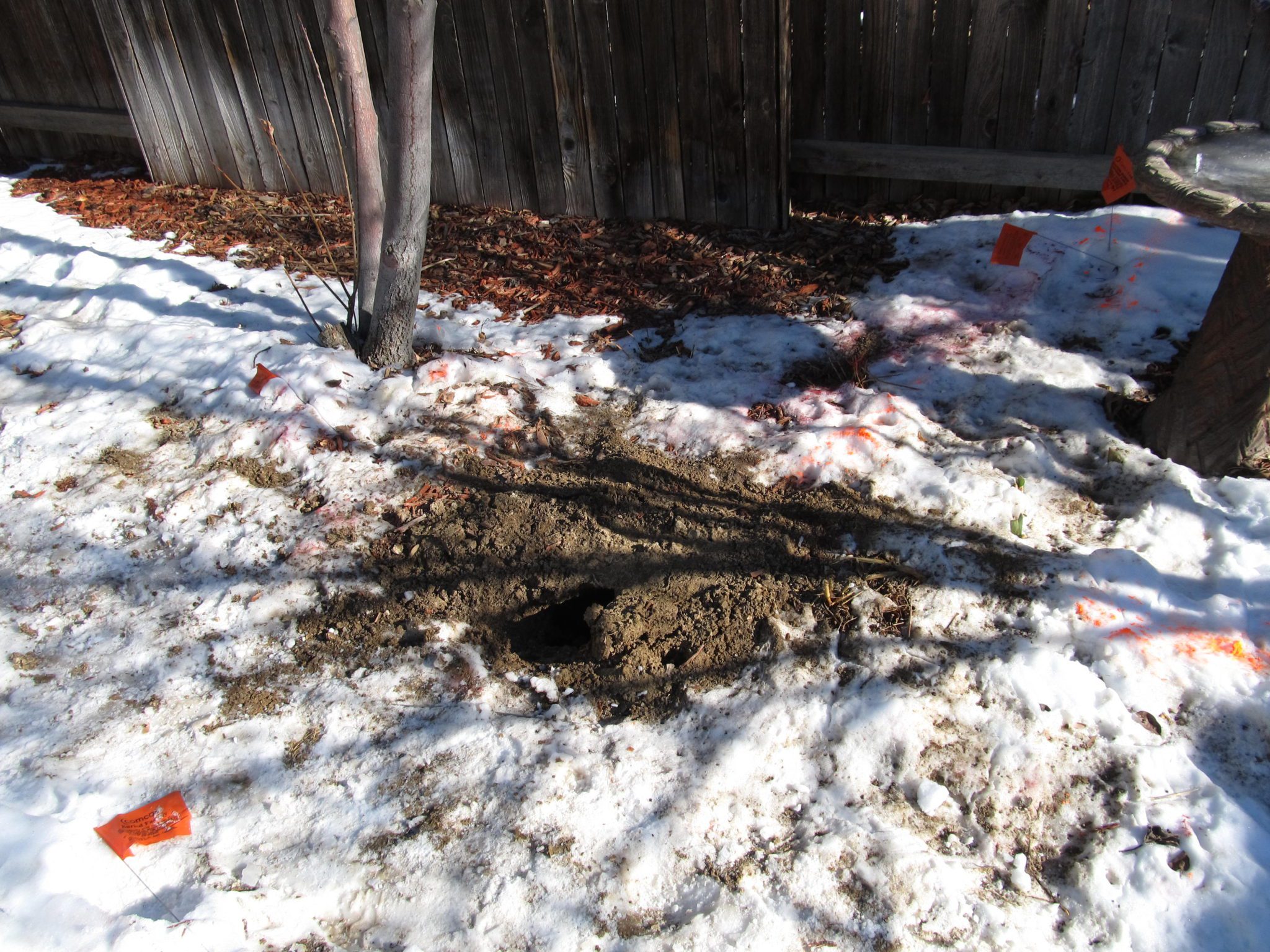
.
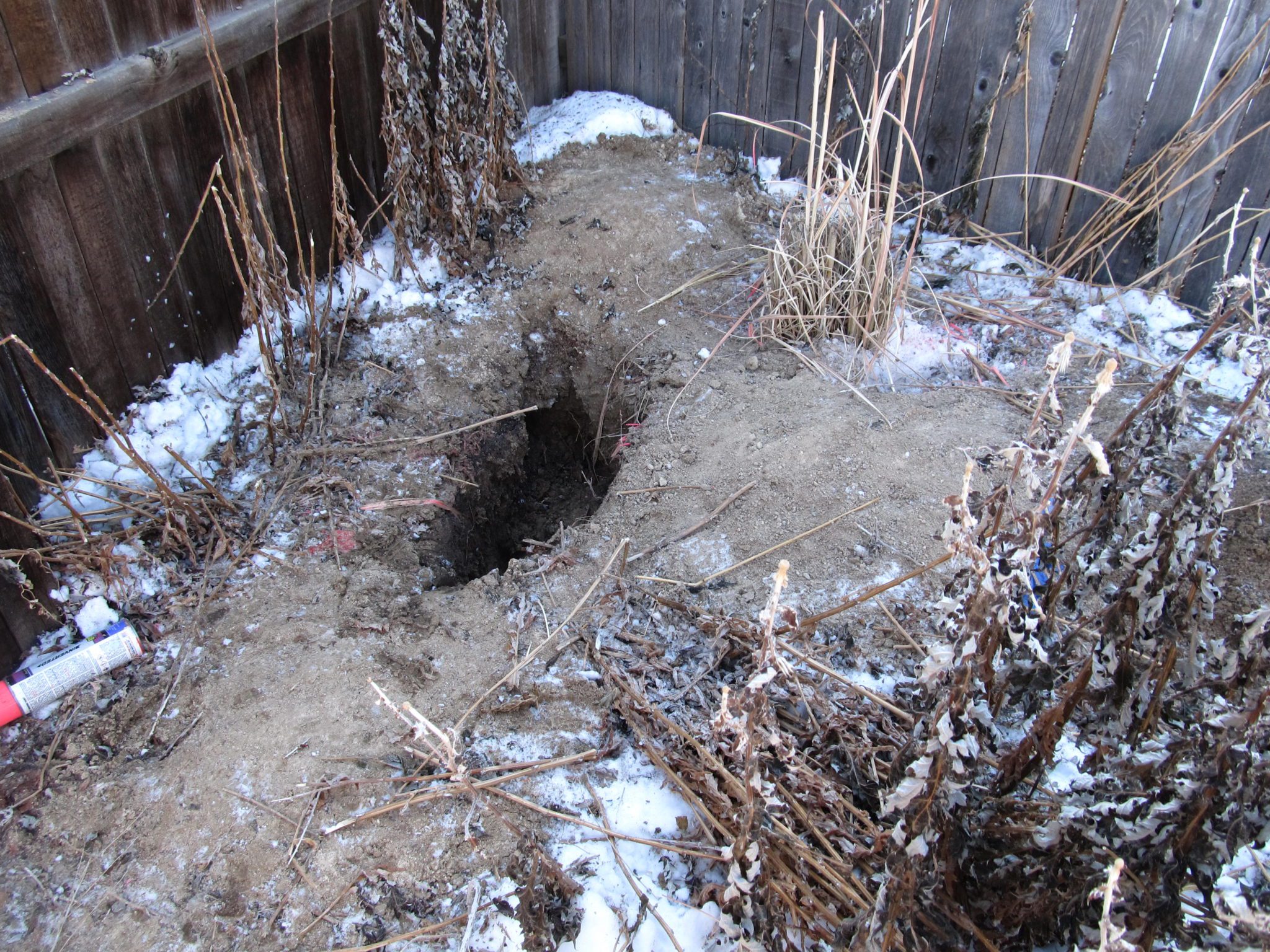
That doesn’t mean, however, that I’m particularly happy about all this either. There is no way to tell right now just how much damage has incurred, but I suspect a few plants will not be returning this year. I won’t know for sure for several months.
If I had been thinking properly, I should have told them that if they needed to, they could access their lines by digging out the serviceberry in the bird bath garden. The one I intend to remove anyway. Would of saved me a lot of labor later this year. 😉
To add insult to injury, the Comcast folks hit a power line and knocked out power in the neighborhood for several hours. Fortunately, after I informed them they got right on it and the power company came out and returned power in a few hours. Well, some of us anyway. I found out later that parts of the neighborhood didn’t get their power restored until early the next morning.
There is one positive I am taking from this whole situation. Gardeners are always falling in love with a new plant. I myself recently found out about a salvia called “Mojave Sage”, and this plant really intrigues me. Hardy to my zone 5 region, it requires no supplemental watering when established. The only real requirement it needs is dry conditions in the winter. My driveway garden would be perfect for such a plant. So should some of the plants have perished in this setback, I already have a replacement in mind.
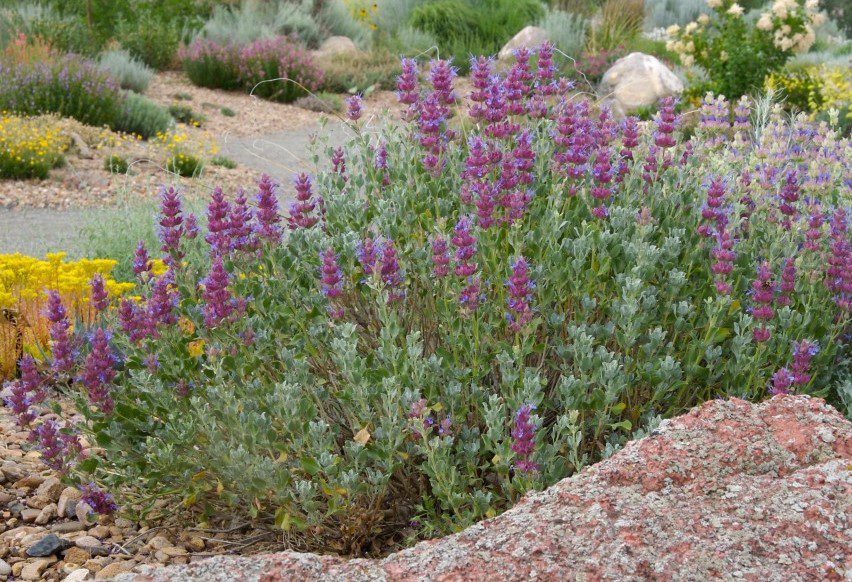
What’s the worst catastrophe to ever afflict your garden? Did you just return the garden to its status quo, or did it provide you an opportunity to try something completely new?

